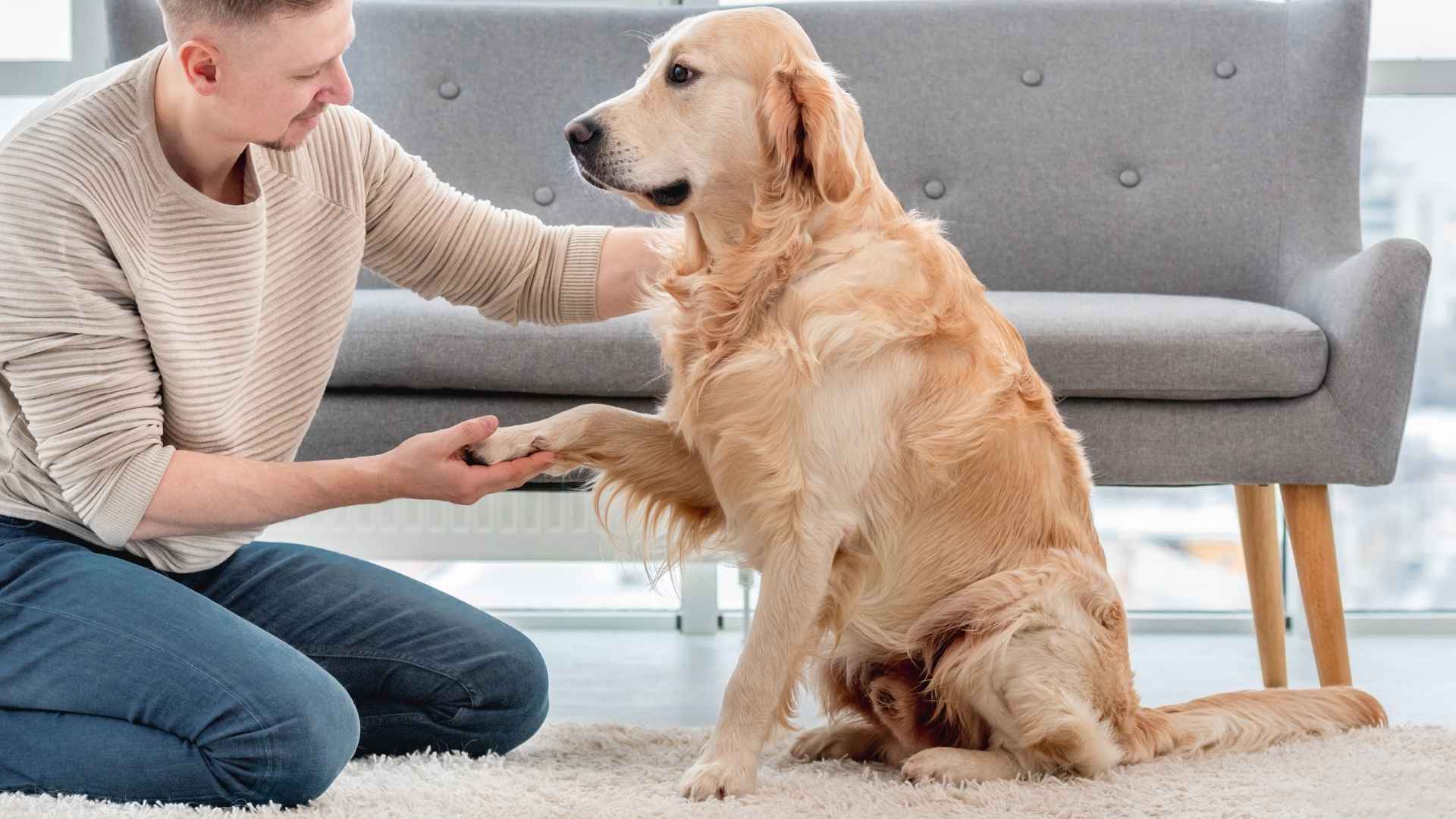Did you know that therapy dogs have been visiting hospitals since World War II to comfort wounded soldiers? These furry healers have been quietly working miracles with nothing but a wagging tail and a warm gaze. While modern medicine can mend the body, therapy dogs have a special way of mending the heart, and loyalty is the secret ingredient that makes them unforgettable.
Whether it’s a child facing anxiety, a veteran dealing with PTSD, or someone simply battling loneliness, the presence of a loyal canine can offer unmatched emotional relief. But not every pup is cut out for the job. It takes a unique blend of empathy, patience, and devotion to truly shine as a therapy companion.
In this blog, we’ll explore the most loyal dog breeds suited for therapy work —those with an uncanny ability to sense emotion, provide comfort, and stay by your side no matter what. Ready to meet your four-legged soul-soother? Let’s dive in.
Loyal Therapy Dog Breeds
1. Cavalier King Charles Spaniel

The Cavalier King Charles Spaniel is a charming blend of toy breed affection and sporting spaniel energy, making it a versatile companion for various lifestyles. Known for their expressive eyes, silky coats, and graceful demeanor, Cavaliers are both elegant and playful, happily switching from a spirited outdoor romp to relaxed couch time depending on their owner’s pace.
The Cavalier King Charles Spaniel was originally bred as a companion and comfort dog, making it an ideal choice for an Animal Assisted Therapy Pet Partner. While many toy breeds are here to be adored by humans, the Cavalier’s purpose seems to be to love and care for them in return.
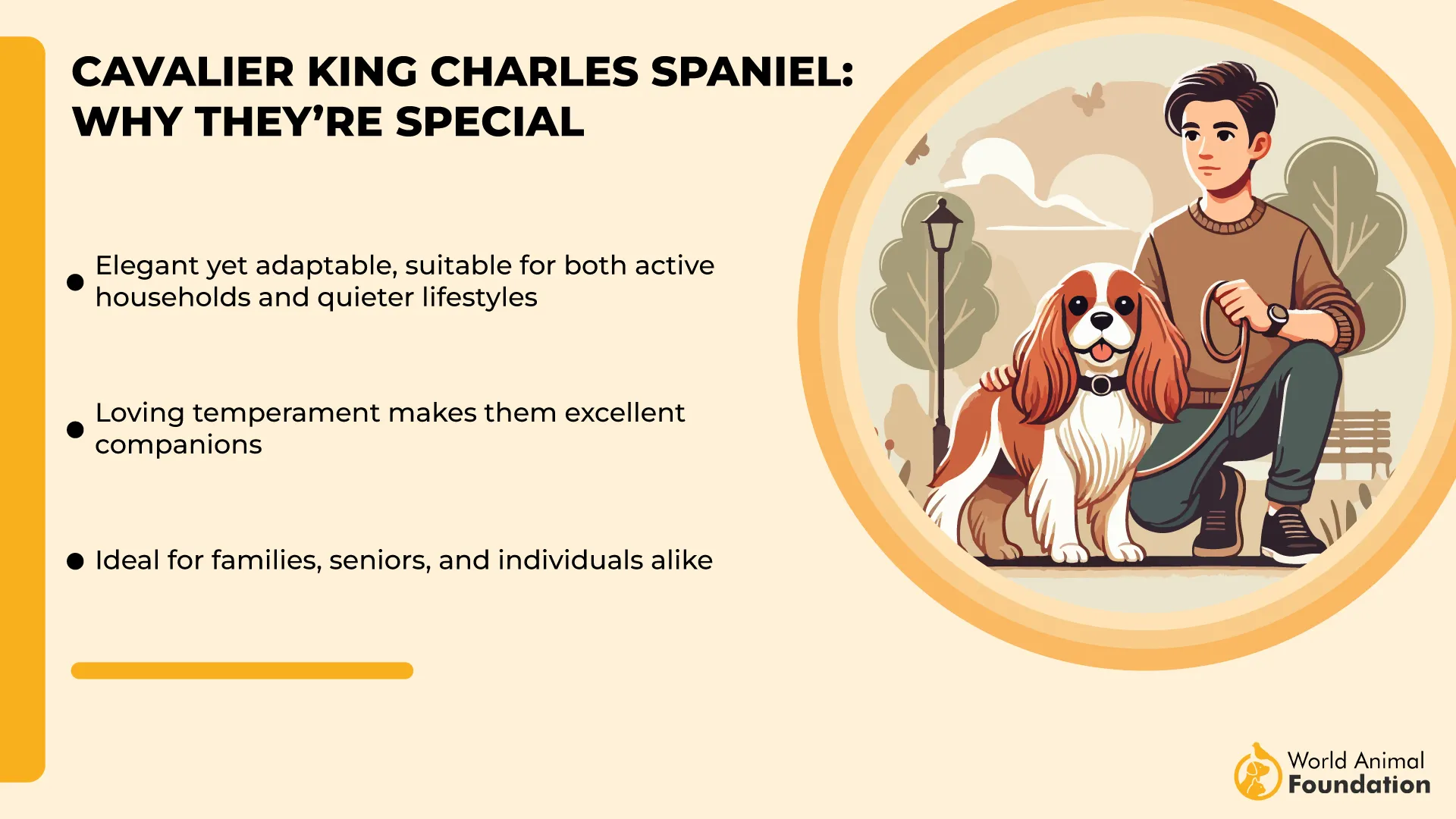
These charming dogs make excellent service animals, and retired champions who have competed in confirmation shows often go on to serve as dedicated therapy dogs.
Highly adaptable, they thrive in both city apartments and rural homes, provided they get daily walks and engaging playtime. Though they enjoy moderate exercise, Cavaliers retain strong scent and chase instincts, meaning they should always be leashed or in secure areas. They are highly intelligent and easy to train, especially with positive reinforcement, and many enjoy dog sports like agility or scent work.
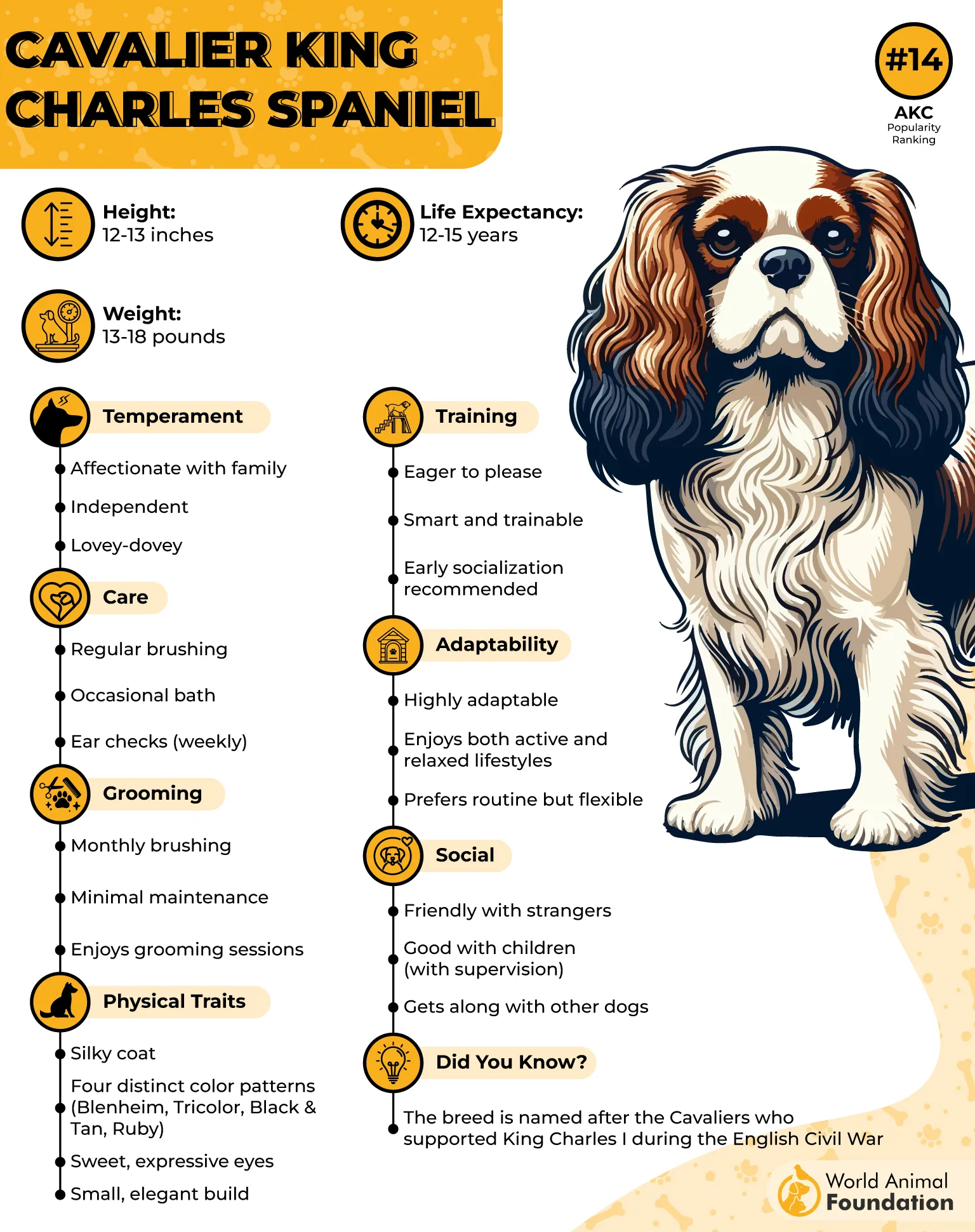
Cavaliers are deeply people-oriented and prone to separation anxiety, so they do best in households where someone is frequently home. Their grooming needs are moderate—regular brushing and occasional baths keep their coats in top shape, while routine care of ears and nails is essential for overall health. Though originally bred for companionship, their sporting roots still shine through in their love for adventure and bonding activities.
2. German Shepherd
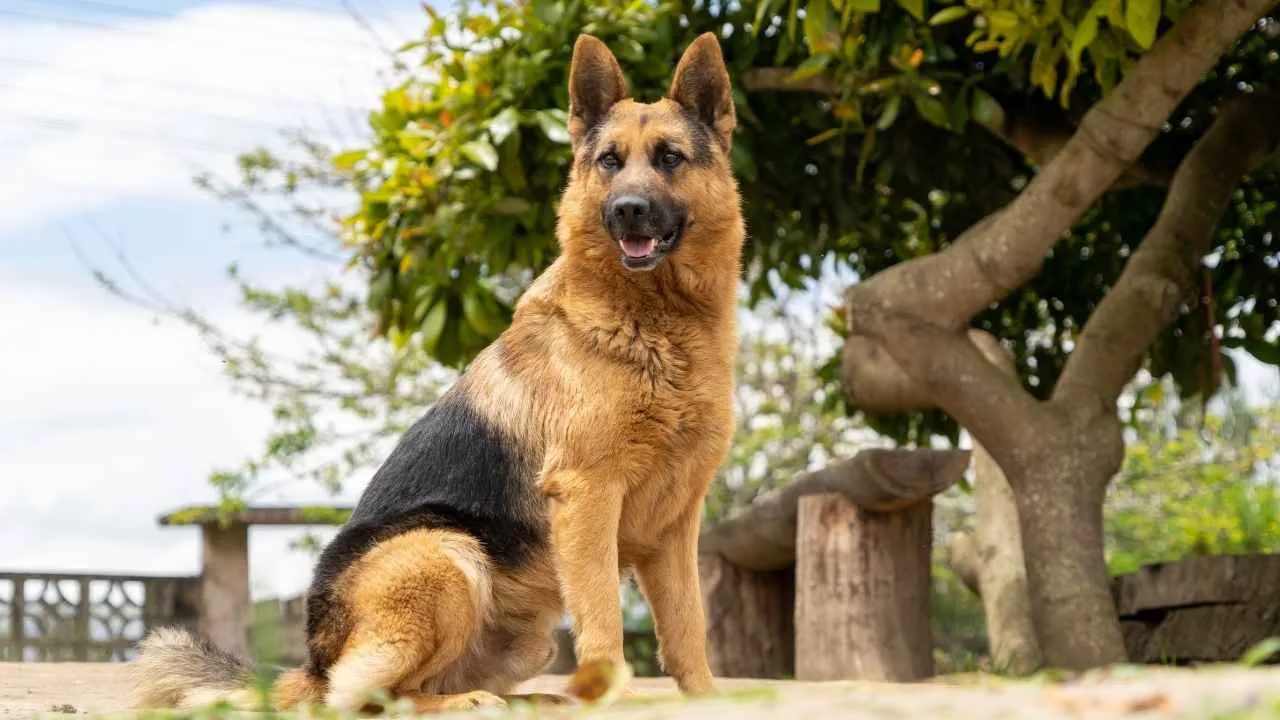
The German Shepherd is a large, intelligent, and athletic breed renowned for its loyalty, courage, and versatility. Highly trainable and eager to work, they excel in roles such as police, military, and search-and-rescue dogs, thanks to their sharp minds and physical strength. Standing 22–26 inches tall and weighing between 50–90 pounds, they are agile dogs with a smooth, powerful gait and a strong, noble appearance.
Their trainability allows them to excel in a variety of service roles, such as guiding the visually impaired, providing mobility assistance for individuals with physical disabilities, and offering support for those with psychiatric conditions. With their strong work ethic and protective instincts, German Shepherds play a crucial role in delivering both assistance and companionship.
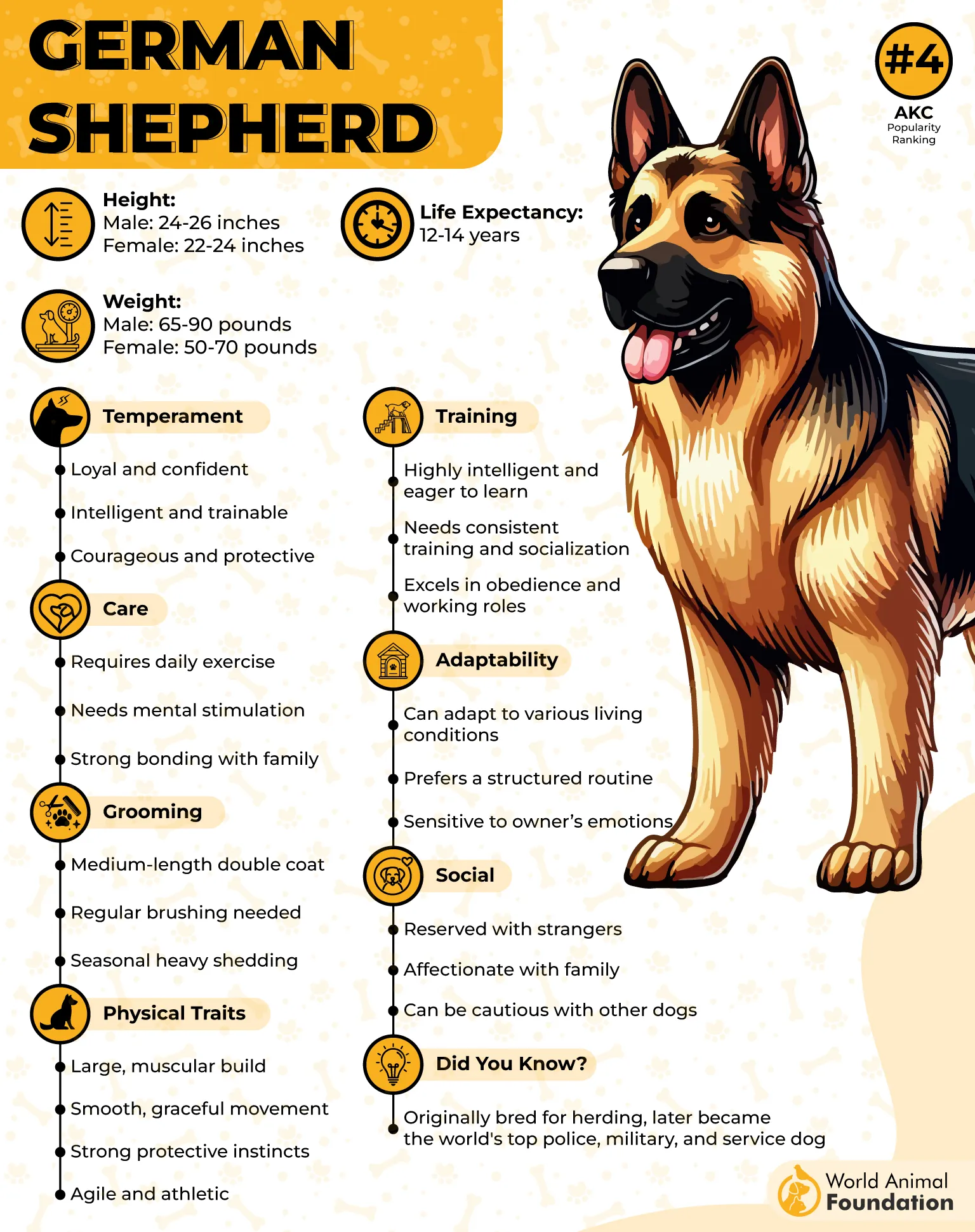
Originally utilized as service dogs in Germany, German Shepherds became the first guide dogs in the United States as well. After World War I, approximately 3,000 soldiers had been blinded by mustard gas, leading to the discovery that German Shepherds could effectively guide them. This prompted the training of these dogs to assist visually impaired soldiers and perform service dog duties.
As noted by AKC, a German Shepherd named “Buddy” became a Seeing Eye Dog for Morris Frank in 1928; the dog played a pivotal role in launching the service dog movement in the U.S.
These dogs require extensive daily exercise and mental stimulation to stay balanced and avoid behavioral issues. Activities like agility, herding, and tracking are ideal outlets. Early socialization is essential, as their naturally protective instincts can lead to wariness of strangers. With proper guidance, they make affectionate family companions and reliable guardians, though they’re not overly friendly with unfamiliar people.
German Shepherds are vital in military and police work and make excellent guard dogs for families. With proper training and care, German Shepherds thrive as loyal, devoted partners in active households.
3. Golden Retriever

The Golden Retriever is a robust and versatile breed developed in 19th-century Scotland as a gundog and water retriever to assist hunters. Known for its strong swimming abilities and friendly, gentle temperament, it is one of the most popular dog breeds in the U.S. with a thick, golden-brown coat, especially noticeable on the neck, tail, and legs.
First shown in England in 1908 and recognized by the American Kennel Club in 1925, this breed excels as a family companion and has also been trained as a guide dog for the blind.
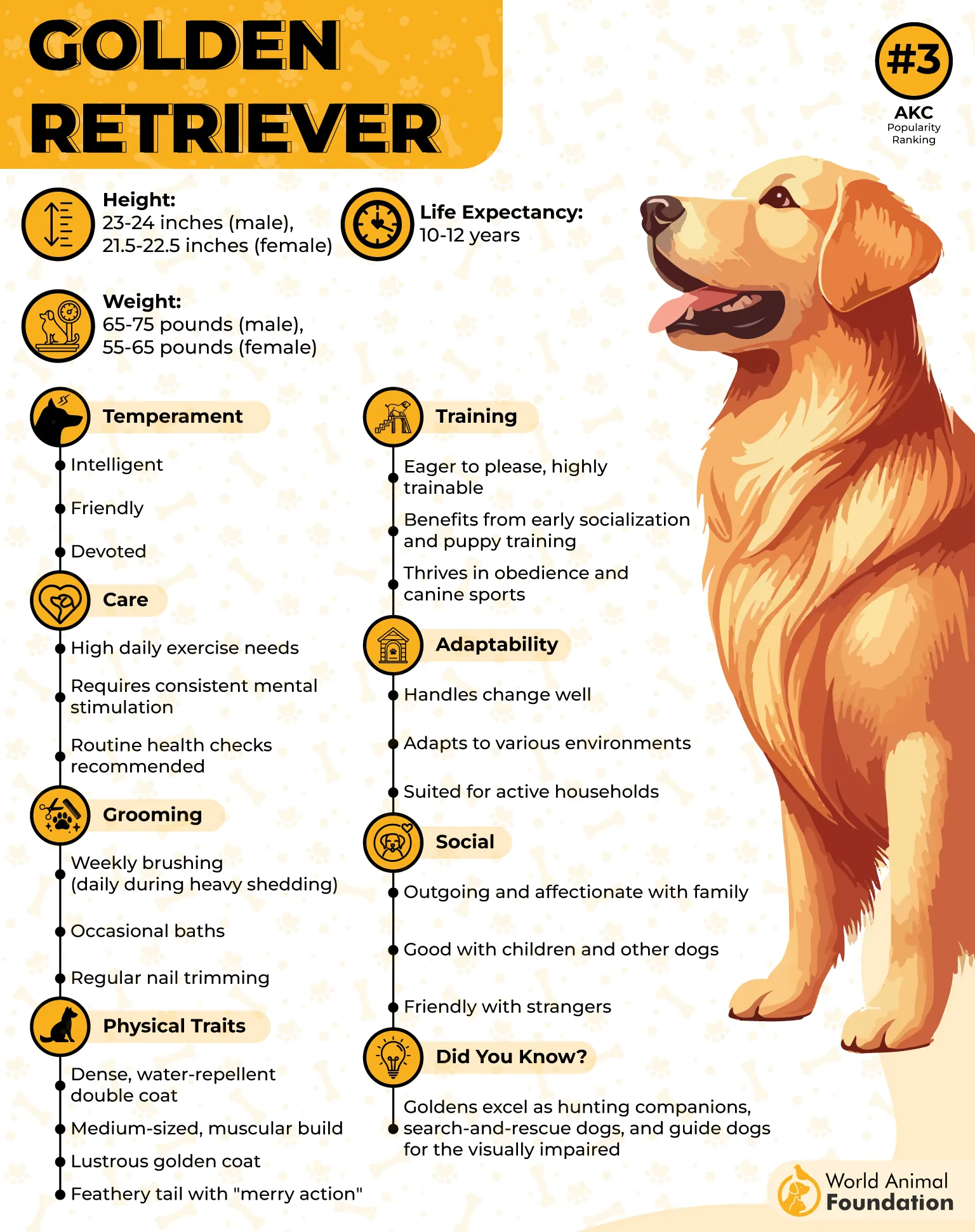
Golden Retrievers are known for their loyalty and desire to be near their human companions. They often follow their owners around the house and enjoy constant attention. Some can be particularly needy, always seeking affection and being close to their families.
This breed is eager to please, outgoing, and thrives in environments where they can engage in activities like retrieving. While they are among the most obedient dog breeds, they can initially be distracted during training. With consistent guidance, they excel in obedience, agility, and field trials, though they can struggle with leash walking if not properly trained.
PetMD states that Goldens make excellent therapy dogs thanks to their friendly disposition, gentle demeanor, and social nature.
Golden Retrievers are prone to various health issues, including allergies, skin conditions, cancer, hypothyroidism, hip and elbow dysplasia, eye problems, and heart disease. These conditions may lead to significant vet care costs over their lifetime.
4. Pug

Once a mischievous companion to Chinese emperors and later the mascot of Holland’s royal House of Orange, the Pug is now adored worldwide. Known for their motto “multum in parvo” (a lot in a little), these small yet muscular dogs pack a lot of personality into their compact frame. Pugs come in three colors: silver, apricot-fawn with a black face mask, or all black.
Their round heads, big sparkling eyes, and wrinkled brows create a variety of human-like expressions, from surprise to curiosity, which have captivated owners for centuries. These loyal companions thrive in both city and country settings, enjoying the company of children, older adults, or even other pets.
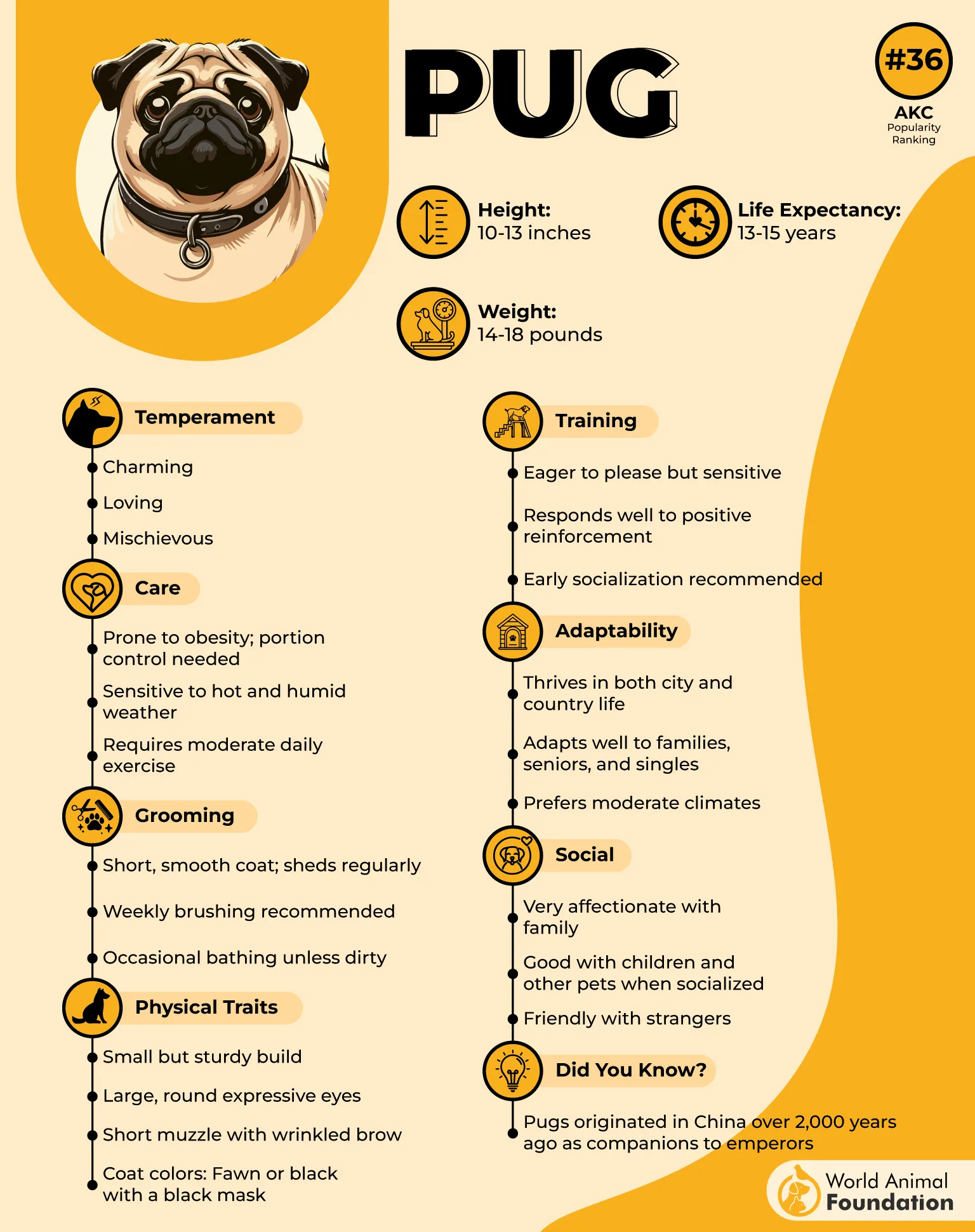
The Pug is an ancient breed with roots tracing back over 2,000 years. Originally favored by Chinese emperors as a companion dog, Pugs were prized pets of the royal court. These flat-faced toy dogs, along with the Pekingese and Shih Tzu, were considered treasures, often given as gifts to outsiders. This royal connection adds a touch of history to the breed, making them even more endearing to modern-day owners.
Pugs are friendly and affectionate dogs and make great family pets. Bred solely for companionship, they naturally crave human attention and affection. This loving temperament makes them ideal for families, as they are great with children, though their small size requires adult supervision to prevent accidental harm. Pug owners often describe them as cheerful, playful, and eager for attention, which only adds to their charm.
These dogs also excel as therapy animals. Known to improve mood and alleviate symptoms of depression, Pugs offer companionship and affection that can boost self-esteem. Their loyalty is unmatched.
They have a special ability to make their owners feel like the most important person in the world. A Pug’s greeting at the door is like a celebration, and their constant companionship brings a comforting sense of purpose to their owners.
5. Newfoundland
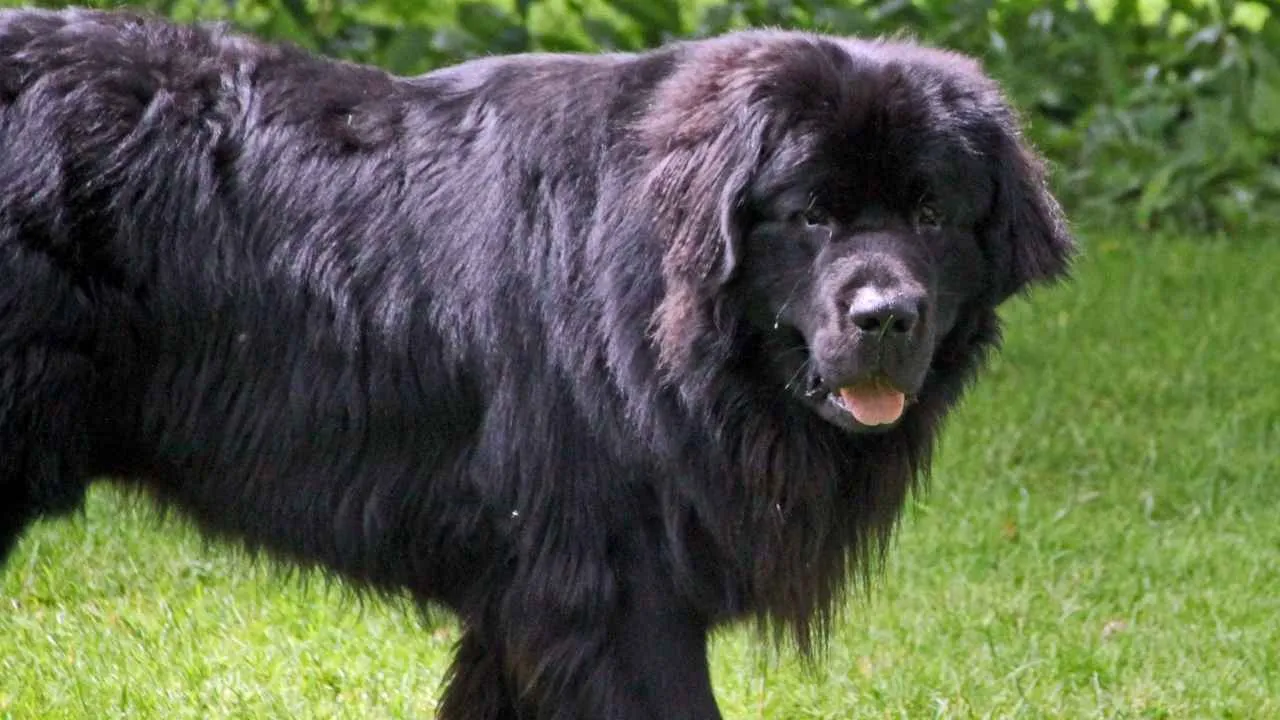
The Newfoundland is a gentle giant, known for its calm temperament and extremely affectionate nature, and prized as one of the best therapy dog breeds. With their patient and empathetic demeanor, these dogs are naturally suited to provide emotional support and comfort to those in need. Their large size and strength are paired with a deep sensitivity, allowing them to be especially effective in settings like hospitals, nursing homes, and therapy sessions.
Newfoundlands are highly trainable and intelligent, which makes them great therapy dogs. Their eagerness to please and natural ability to sense the needs of others ensure they are reliable and consistent, offering much-needed companionship and support.
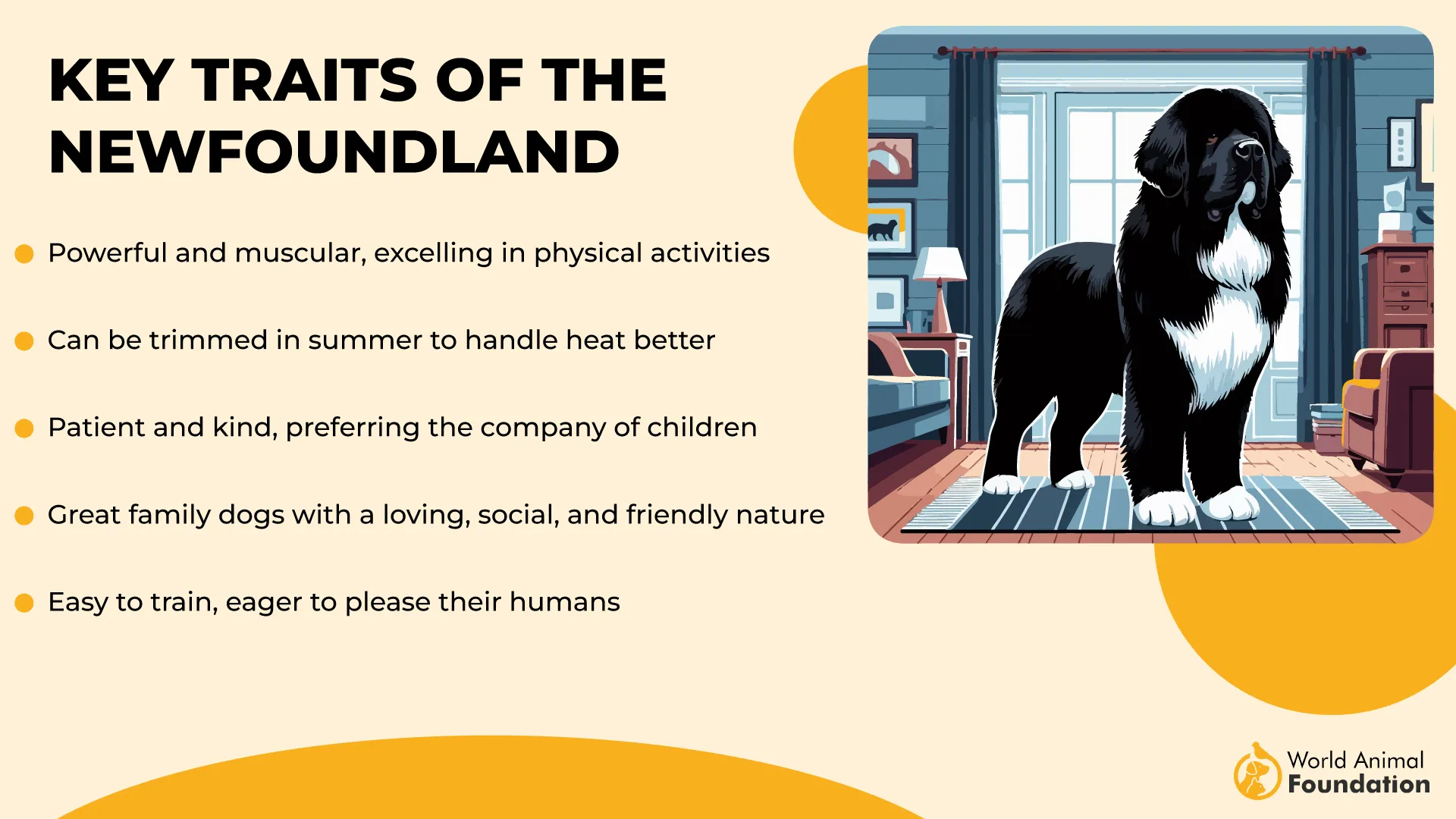
Newfoundlands are an incredibly loyal breed. This loyalty extends to their work as therapy dogs, where they offer a sense of security and companionship. Their calm disposition makes them ideal for working with individuals who require emotional stability or support, whether in one-on-one therapy settings or in group environments.
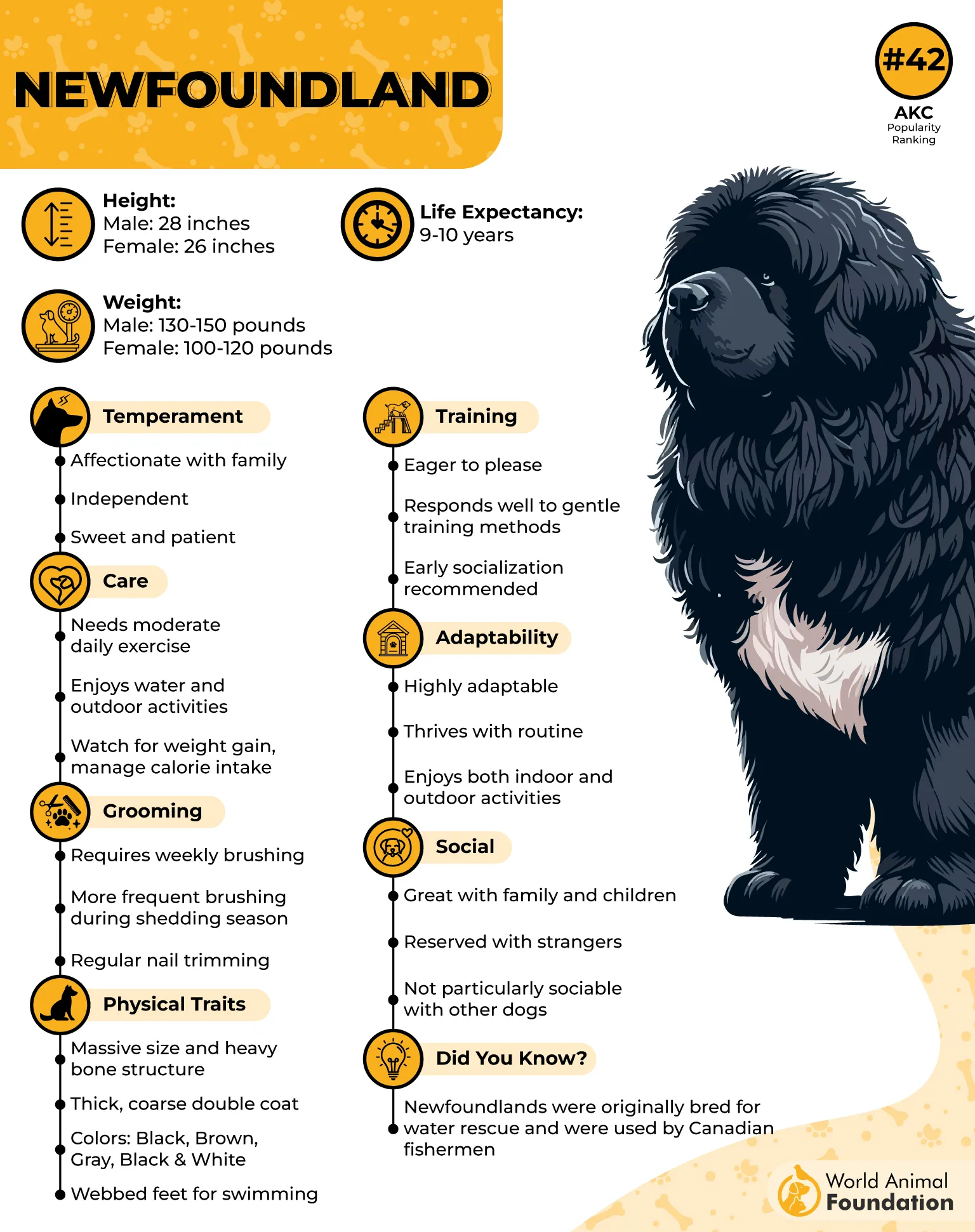
Known for their ability to stay composed in stressful situations, Newfoundlands excel in assisting individuals with anxiety, depression, or physical disabilities. Their nurturing and affectionate nature helps create a safe, comforting environment for patients, especially those who might be vulnerable or in need of a soothing presence.
Their physical size may be intimidating to some, but Newfoundlands are surprisingly gentle. Their slow, deliberate movements and nurturing behavior allow them to connect deeply with people, making them perfect companions for therapy work. They are attentive to human emotions and provide unconditional love and comfort.
6. Labrador Retriever
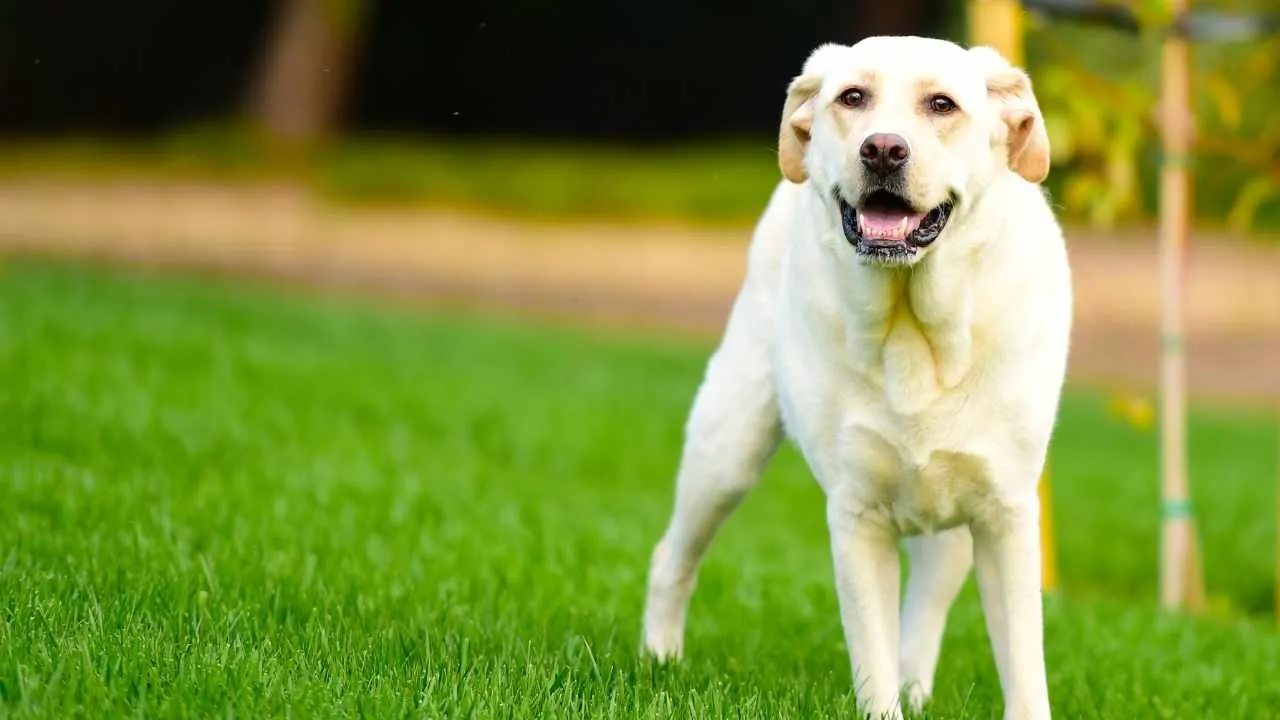
Labrador Retrievers are renowned for their loyalty, making them ideal candidates as therapy dogs. Their natural disposition towards affection and companionship allows them to form strong bonds with their human counterparts. This loyalty extends to their work as therapy dogs, where they provide emotional support, comfort, and companionship to individuals in various settings, such as hospitals, nursing homes, and rehabilitation centers.
In addition to their emotional support role, Labradors are also known for their physical assistance capabilities. Some therapy Labradors are trained to perform tasks such as retrieving items or providing mobility support, further enhancing their value in therapeutic settings.
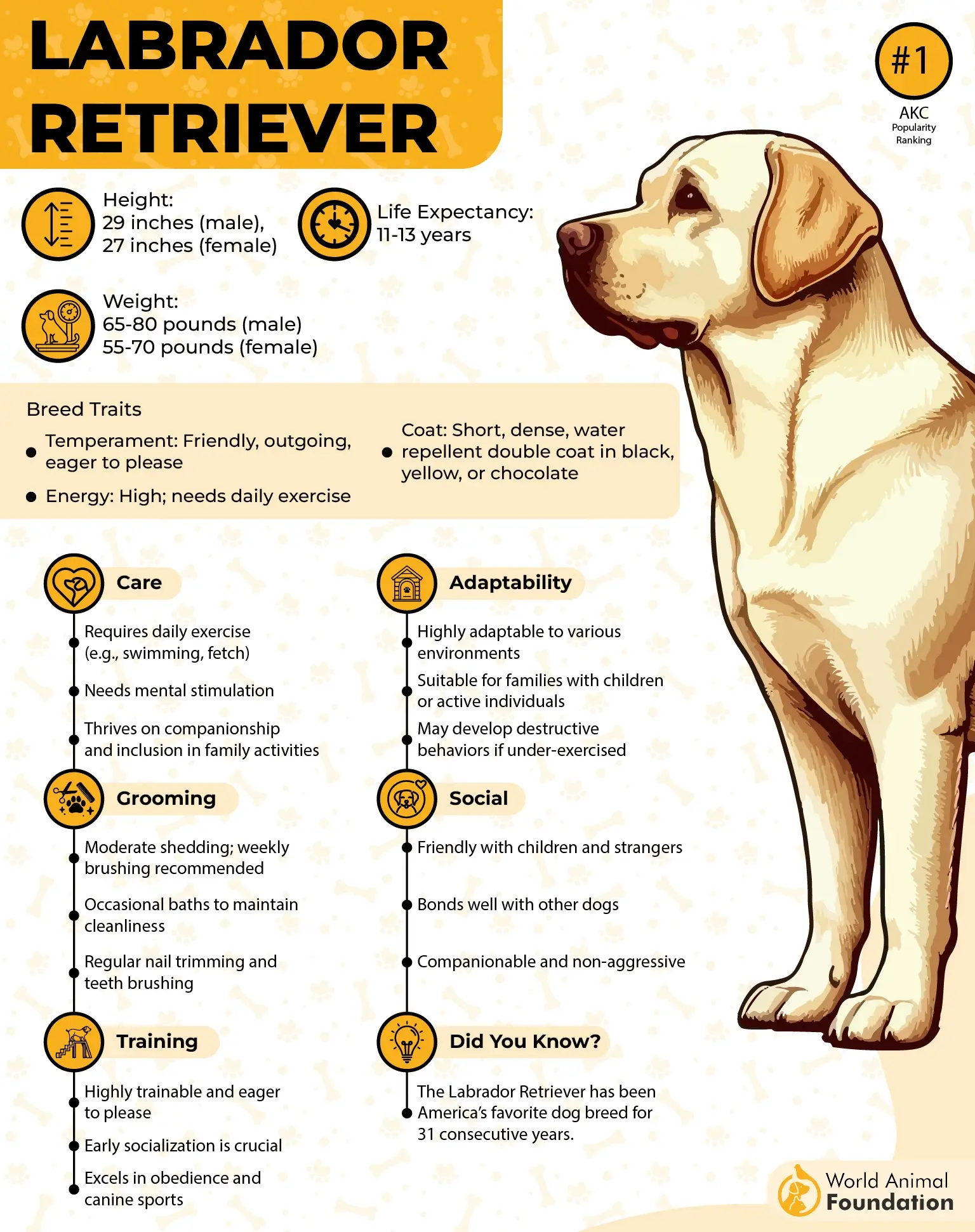
Their intelligence is another key trait that makes Labradors exceptional therapy dogs. They are easy to train and respond well to positive reinforcement, allowing them to learn specific tasks that help their handlers. This makes them particularly effective in assisting individuals with mental health issues, offering a calming presence and helping to reduce anxiety and stress.
Labradors have a gentle and patient nature, which is essential when working with vulnerable populations. Whether it’s a child with autism, an elderly person with dementia, or someone undergoing rehabilitation, Labradors instinctively sense the emotional needs of those around them. Their ability to remain calm in stressful situations and offer unconditional support helps create a safe and nurturing environment for individuals in need.
Their playful and energetic nature also contributes to their role as therapy dogs. While they are calm and gentle when necessary, they also provide moments of joy and engagement, encouraging individuals to interact and stay active. This balance of relaxation and playfulness helps improve mental and physical well-being, making them effective in therapy settings for a wide range of needs.
7. French Bulldog
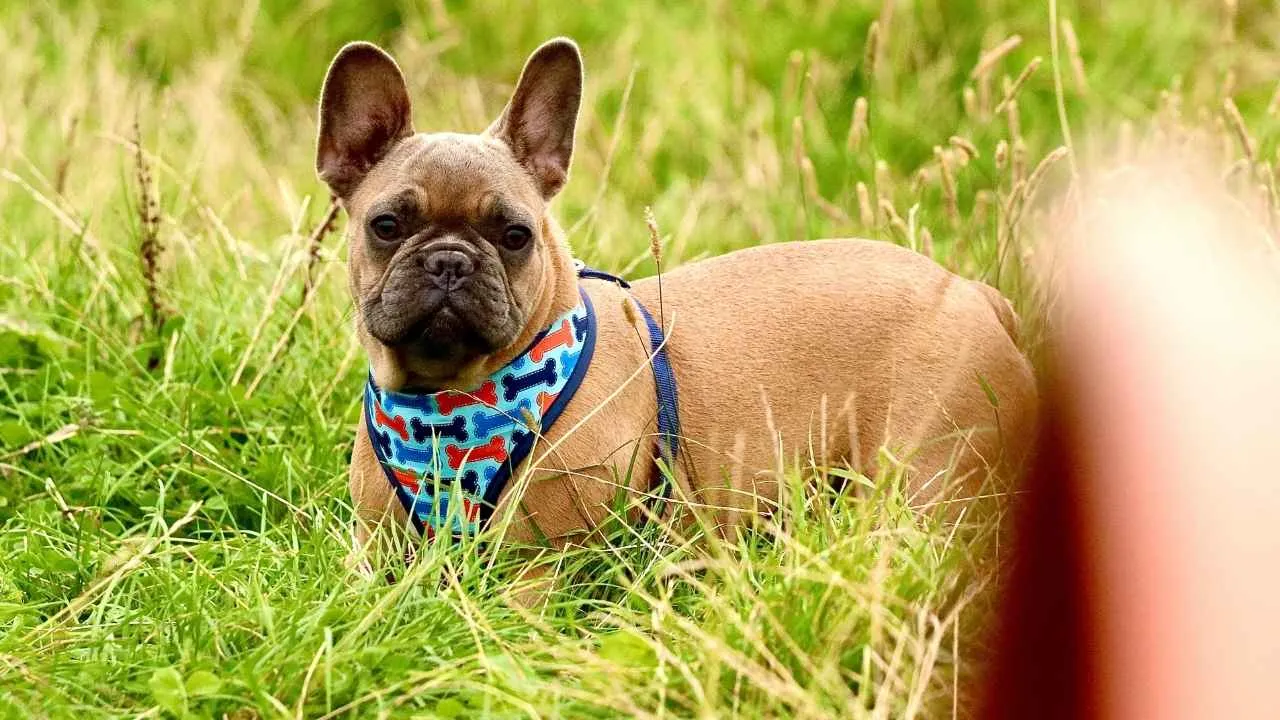
The French Bulldog, with its signature bat-like ears and even-tempered personality, is one of the most beloved small dog breeds worldwide, especially popular among city dwellers. Playful, alert, and adaptable, the Frenchie is a charming and irresistible companion. Its compact, muscular build and smooth, glossy coat are complemented by a distinctive, large, square head with prominent wrinkles and a short nose.
Originally bred as lap dogs, their instinct to stay close to their owners makes them great emotional support dogs. With their gentle, affectionate nature and constant desire for physical connection, they offer immense comfort during stressful or anxious moments.
Their ability to form strong, emotional bonds with their human companions allows them to provide the reassurance and comfort you need.
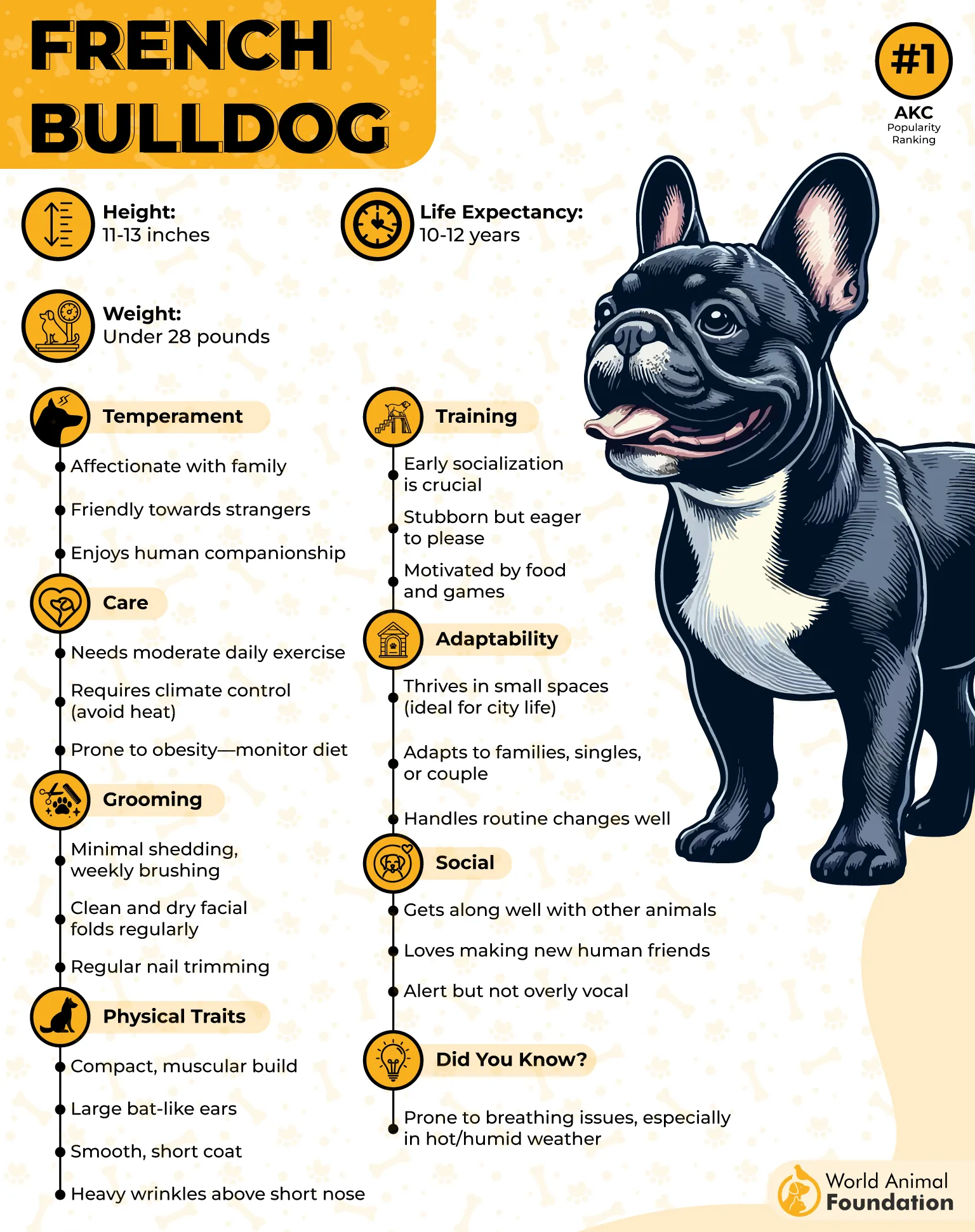
Though they are not vocal, French Bulldogs are excellent watchdogs due to their natural alertness. They fit well into various living environments, whether with singles, couples, or families, and are generally good with other pets and people. This breed’s easygoing nature and minimal exercise needs make it perfect for apartment living, where they thrive as loyal, affectionate pets.
Britannica states French Bulldogs can struggle with breathing difficulties due to their short snouts, so owners should be mindful of the dog’s energy levels and exercise requirements. While they don’t need intense physical activity, it’s important to let them dictate their own pace when out for walks and playtime to avoid overexertion.
Training French Bulldogs can be a bit challenging due to their independent streak. While they respond well to food-based rewards, it’s crucial to avoid over-reliance on treats to prevent weight gain. Recall training is especially important to keep them safe during outdoor activities, as their curiosity often leads them to explore their surroundings.
Conclusion
When selecting a loyal therapy dog, it’s essential to consider a breed’s intelligence, temperament, and suitability for emotional support roles. Certain intelligent dog breeds, such as Border Collies and Doberman Pinschers, excel as therapy dogs due to their natural obedience and strong herding instincts.
Other dogs, like the Staffordshire Bull Terrier and Yorkshire Terrier, may be less commonly associated with therapy work but still make great family dogs due to their loyalty and protective nature. Certain breeds like the Standard Poodle, known for their intelligence and hypoallergenic coats, are also wonderful therapy animals.
While hunting dogs and working dogs like the Border Collie or Doberman Pinscher may be more commonly recognized for their skills, many other dogs, regardless of their working background, possess the ability to provide comfort, emotional support, and companionship.
Ultimately, the most loyal therapy dogs are those whose personalities align with the needs of their human companions, offering both comfort and protection in times of need.


